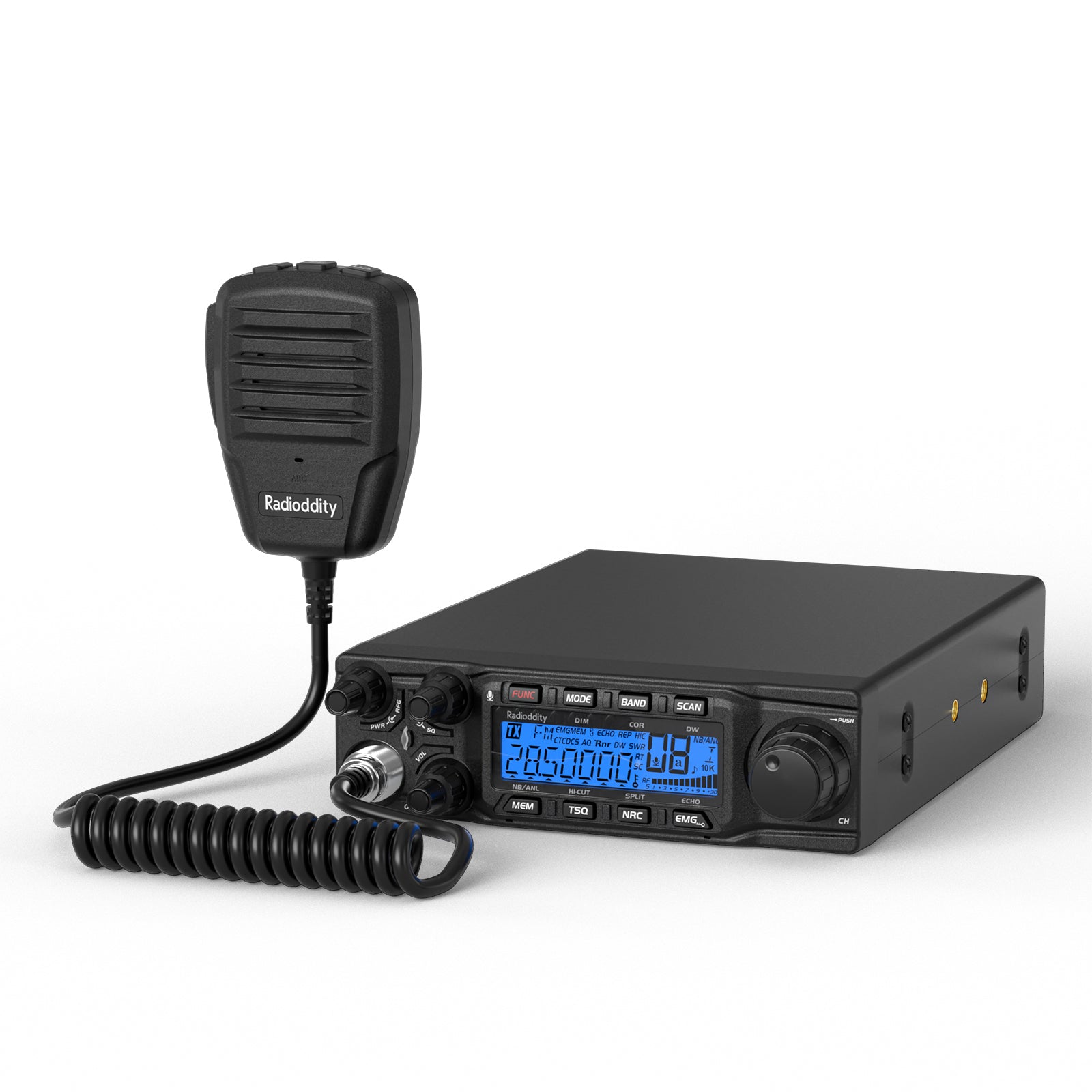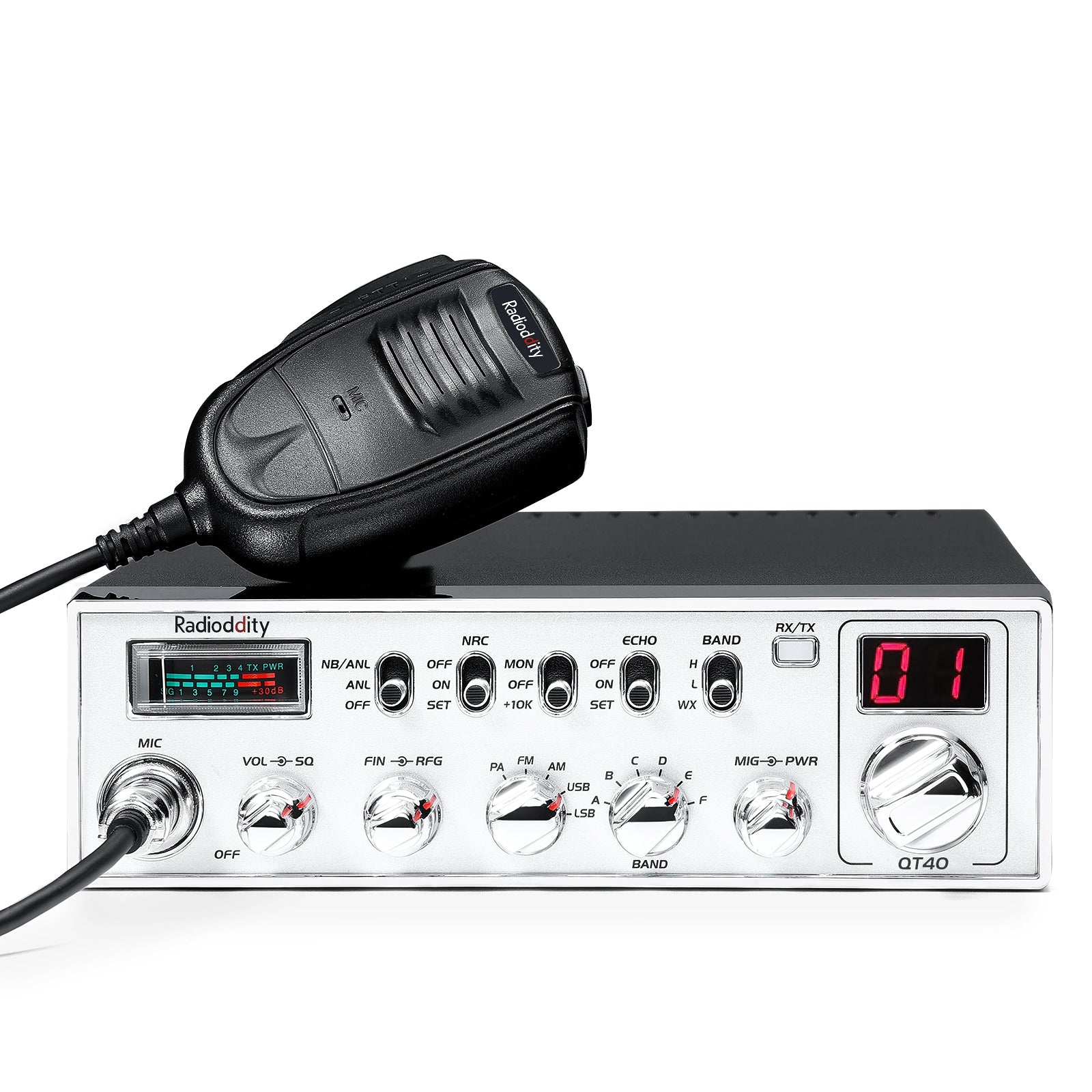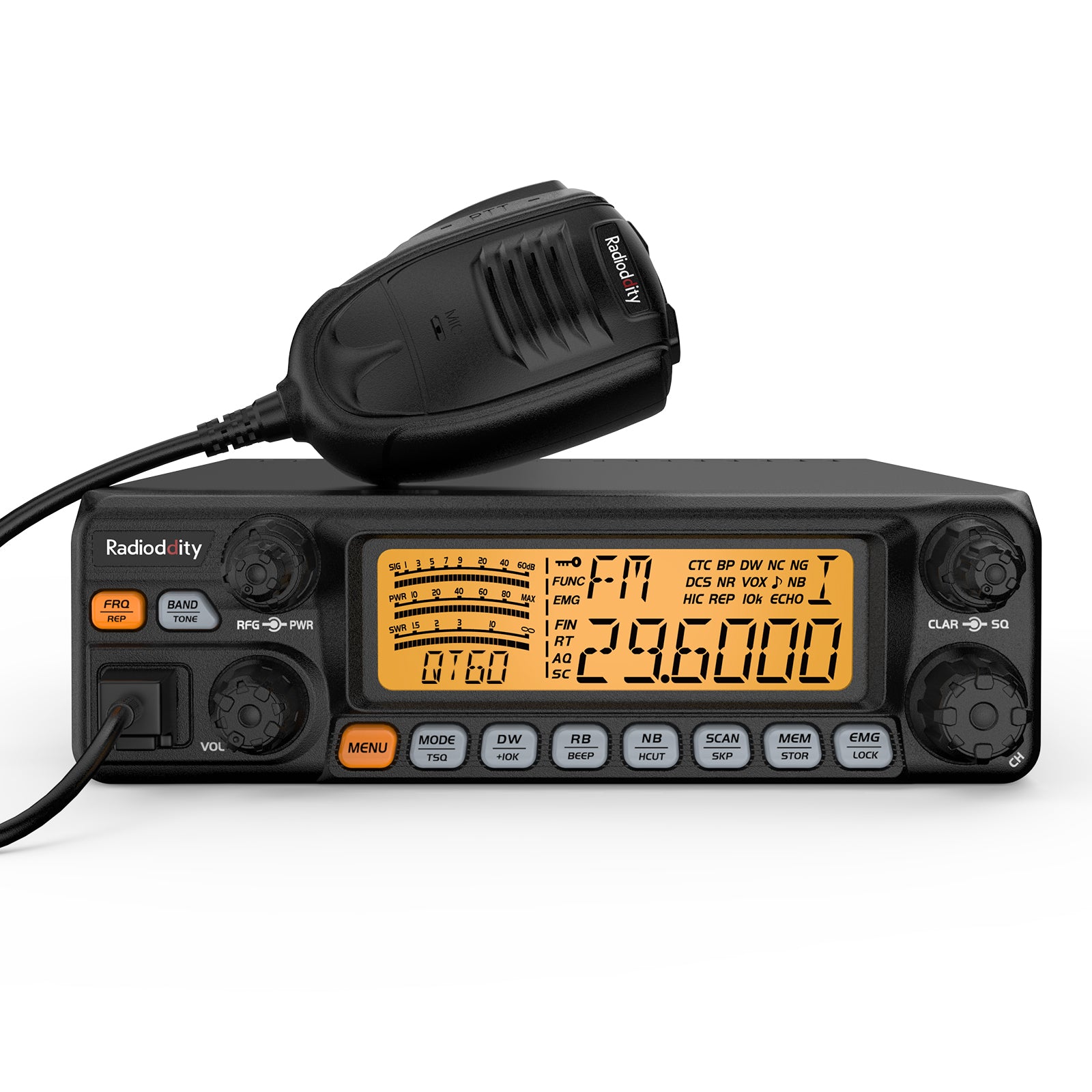80W High Power: Experience clearer and stronger signals in challenging conditions with our 80W high-power radio. Perfect for amateur radio enthusiasts and professional operators, it guarantees reliable long-distance communication in any environment. FCC ID: T4K-AT6666PRO
Versatile Communication Modes: Seamlessly switch between FM, AM, SSB (USB, LSB), CW, and PA modes to adapt to various communication needs, from casual use to professional applications, catering to various communication scenarios.
Advanced Noise Reduction: Customize your listening experience with adjustable TX & RX background noise reduction. Enjoy crystal-clear audio with minimized background noise and enhanced voice clarity, ensuring smooth and intelligible transmissions every time.
ASQ Function: The Automatic Squelch Control (ASQ) function intelligently filters out unwanted noise and static, providing a cleaner and more enjoyable listening experience. Say goodbye to constant manual adjustments and enjoy hassle-free communication.
7-Color LCD Display: Personalize your interface with a vibrant 7-color LCD display that complements any environment. Choose your preferred color for optimal visibility and a modern touch, enhancing your communication setup.
CTCSS/DCS:Use CTCSS/DCS codes to prevent interference and enhance privacy during group communications, ensuring clear and secure conversations.
Precision Frequency Tuning: Tune precisely with 7 Frequency Tuning Step options (10Hz/100Hz/1KHz/5KHz/10KHz/100KHz/1MHz), enabling accurate adjustments for clear communication.
Disclaime: No License is required to purchase this radio, nor to Monitor (listen) to the many Amateur (Ham) Radio frequencies. However, an FCC License is required to Transmit (Talk) on Amateur Radio Frequencies in the USA. Please visit http://wireless.fcc.gov/services/amateur/licensing to learn more.
Download the user manual and CPS.
![Radioddity GD-168 [OPEN BOX] - Radioddity](http://www.radioddity.com/cdn/shop/files/GD-168_1600x1600_3922a234-2fe4-4b80-8282-3f6d17a10d71.png?v=1762470234)










![Baofeng GT-5R 5W Dual Band Radio [Upgraded Legal Version of UV-5R] - Radioddity](http://www.radioddity.com/cdn/shop/products/GT-5RImage.png?v=1762459898)
![Baofeng UV-5R PLUS [5 Colors] | DUAL BAND | 4/1W | 128CH | FLASHLIGHT - Radioddity](http://www.radioddity.com/cdn/shop/products/3_58c037e1-560a-4c85-bd75-67c202269d29.jpg?v=1762457615)










![GA-2S UHF Long Range USB Two way Radio [2/4/6 Packs] - Radioddity](http://www.radioddity.com/cdn/shop/products/5_96d2d28c-8609-4f29-926b-d423141df2f4.jpg?v=1762457835)



![Baofeng BF-888S [2 Pack] | UHF | 5W | 16CH | CTCSS/DCS | Flashlight - Radioddity](http://www.radioddity.com/cdn/shop/products/1___1___1.jpg?v=1762457605)
![Baofeng GT-1 [2 Pack] | UHF | 5W | 16CH | Flashlight | FM Function Two-Way Radio - Radioddity](http://www.radioddity.com/cdn/shop/products/ia_100000006122.jpg?v=1762457668)






















































